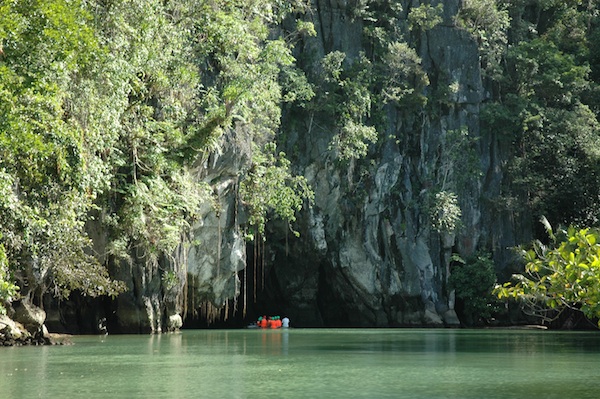Towards a Model City in Sustainable Development
The Palawan Biosphere Reserve is a cluster of islands composed of one long main island and smaller groups of islands around it. Gli 1,150,800 hectares of the biosphere reserve include the entire Province of Palawan Island, which is the westernmost province of the Philippines.
Puerto Princesa, capital of the Palawan province, is also known worldwide thanks to the underground river flowing close by, where the Puerto-Princesa Subterranean River National Park was created. The park was included in UNESCO’s World Heritage List in 1999.
Puerto Princesa è una città multiawarded e pioniere per iniziative ambientali nelle Filippine. ‘The City in a Forest’ is the designation that embraces the sustainable city strategy.
Solar and hydro power for a sustainable city
Nel mese di giugno 2010 the City of Puerto Princesa formed a technical partnership with Optimal Power Solutions (OPS) in order to address the city’s power shortage, attualmente stimato in 5 a 10 MW.
Un problema costante e significativa è stata la fornitura di energia sostenibile per Puerto Princesa. Attualmente, gruppi elettrogeni diesel forniscono una capacità di 30 MW di potenza per gli abitanti di Puerto Princesa. OPS e il piano del Comune per progettare e implementare le fonti di energia rinnovabili per generare energia elettrica supplementare, ridurre il consumo di gasolio e di promuovere un futuro energetico sostenibile e sostenibile. Si prevede che le nuove fonti di fino a rinnovabili 10 MW sarà integrato a fasi successive. Questa capacità rinnovabile privilegerà l'esportazione di energia fotovoltaica in rete per un migliore supporto e minore utilizzo dei generatori diesel di corrente. Fase Uno 1 MW progredendo fino a 2MW, 5MW ed infine 10 MW che fornisce per la crescita futura del carico del Comune.
Inoltre, the Palawan Electric Cooperative (PALECO), the City Government of Puerto Princesa and WEnergy Global PteLtd have signed a Memorandum of Understanding (MoU) for the development of a hybrid electric power plant (1.5 MWp) to cover electricity supply of the Baranguy Cabayugan.
Hydro power is also part of the city’s energy strategy. Le gemelle 3.4MW idro-turbine forniscono almeno 32 million kWh of electricity to the Palawan grid. Hydropower will replace the old and expensive to run NPC generators.
Altre case a basso consumo energetico
La crescente popolazione urbana di Puerto Princesa ha portato alla congestione nella zona della baia della città, minacciando la qualità della gente di vita e di zone di riserva costiere. Progetti di case sulla costa di Puerto Princesa City sono stati progettati per ridurre la domanda di energia attraverso una maggiore luce naturale, una migliore ventilazione, l'effetto di raffreddamento del materiale di copertura e piantando strategicamente almeno un albero da frutto per famiglia.
I potenziali risparmi annuali di carbonio è stimato essere almeno 72 tonnellate per la 330 famiglie. Altre caratteristiche verdi dei progetti di edilizia comprendono l'installazione di un impianto di captazione delle acque piovane che riduce la domanda di pompaggio dell'acqua, che vieta l'uso del legno per il tetto e le cornici interne e di un sistema di smaltimento adeguato per i rifiuti non riciclabili e non biodegradabili.
Trasporto pubblico Greening
The local government of Puerto Princesa has entered a partnership with the Institute for Climate and Sustainable Cities (ICSC), a non-governmental organization based in the Philippines working on “sustainable energy solutions and fair climate policy.” This partnership is under the Climate-Friendly Cities initiative of the iCSC, an initiative which combines waste management, generazione di energia rinnovabile e di programmi di trasporto sostenibili per lo sviluppo sostenibile, climate-resilient city and community development.
Attualmente, Puerto Princesa ha jeepneys elettrici (e-jeepneys) in the local government fleet and for private use, as well as electric tricycles (e-trike), quali sono improvvisato veicoli a tre ruote da moto. Il concetto di e-jeepneys è stato sviluppato da ICSC attraverso un finanziamento dalla fondazione olandese, DOEN. E-jeepneys sono stati introdotti in Puerto Princesa in 2009, con la cooperazione politica gioca un ruolo importante nella istituzionalizzazione dei veicoli elettrici, come i trasporti pubblici. The power requirements of the electric feedjeeps and tricycles will be partly covered by the Waste-To-Energy project, jointly developed with the Institute of Climate and Sustainable Cities.
Reducing tourism’s carbon footprint
Puerto Princesa is currently among the top 10 major tourist destinations in the Philippines, and is striving to be the country’s number one tourist destination for eco-tourism.
Puerto Princesa has extended the concept of energy sustainability to the tourism sector, one example being its participation in the SWITCH-Asia ‘Zero Carbon Resorts’ project that seeks to enable tourism SMEs, come alberghi e resort, di fornire i propri servizi energetici in modo efficiente, conveniente, e ambientalmente modo suono.
Il progetto applica la strategia 3R: Ridurre-Sostituire-Redesign. Il primo passo è ridurre il consumo di energia in alberghi e villaggi, e il secondo passo è quello di sostituire i dispositivi inefficienti base fossile con una migliore, tecnologie più verdi. Nella fase di riprogettazione, a showcase ‘Zero Carbon Cottage’ will be built in Palawan, che opererà utilizzando solare- e sistemi di generazione di energia a base di biomassa.
Lessons learned and replicability
Consistent with the vision of an environmentally sustainable city, Puerto Princesa will take a lead role in promoting environmental stewardship building mutual support and cooperation with cities in the Asia-Pacific region.
The ‘City in the Forest’ becomes the stage for the future of energy supply in The Philippines by enabling the mix in energy to contribute to stable prices for consumers and the mitigation of global warming.


















